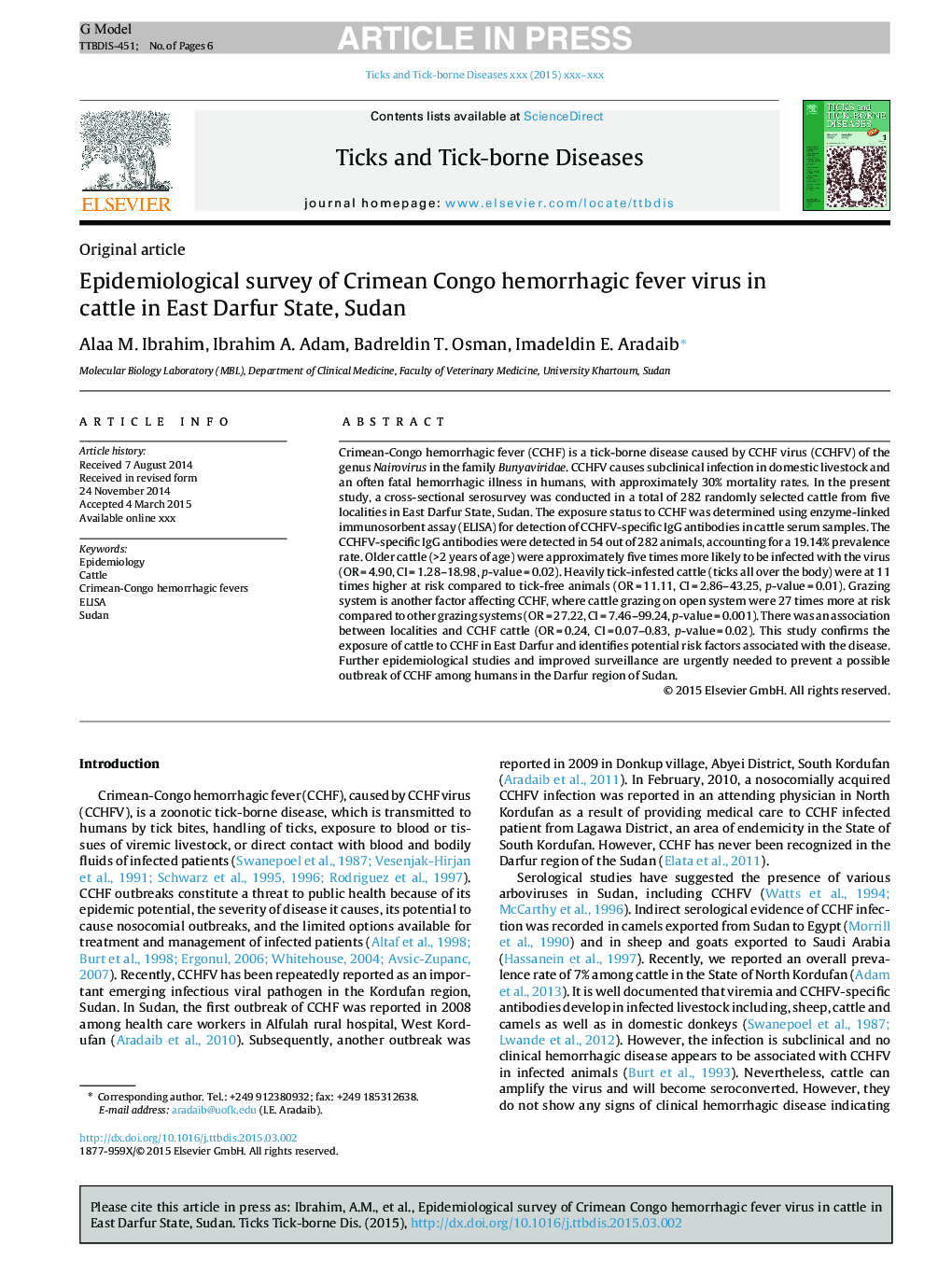| Article ID | Journal | Published Year | Pages | File Type |
|---|---|---|---|---|
| 5807297 | Ticks and Tick-borne Diseases | 2015 | 6 Pages |
Abstract
Crimean-Congo hemorrhagic fever (CCHF) is a tick-borne disease caused by CCHF virus (CCHFV) of the genus Nairovirus in the family Bunyaviridae. CCHFV causes subclinical infection in domestic livestock and an often fatal hemorrhagic illness in humans, with approximately 30% mortality rates. In the present study, a cross-sectional serosurvey was conducted in a total of 282 randomly selected cattle from five localities in East Darfur State, Sudan. The exposure status to CCHF was determined using enzyme-linked immunosorbent assay (ELISA) for detection of CCHFV-specific IgG antibodies in cattle serum samples. The CCHFV-specific IgG antibodies were detected in 54 out of 282 animals, accounting for a 19.14% prevalence rate. Older cattle (>2 years of age) were approximately five times more likely to be infected with the virus (OR = 4.90, CI = 1.28-18.98, p-value = 0.02). Heavily tick-infested cattle (ticks all over the body) were at 11 times higher at risk compared to tick-free animals (OR = 11.11, CI = 2.86-43.25, p-value = 0.01). Grazing system is another factor affecting CCHF, where cattle grazing on open system were 27 times more at risk compared to other grazing systems (OR = 27.22, CI = 7.46-99.24, p-value = 0.001). There was an association between localities and CCHF cattle (OR = 0.24, CI = 0.07-0.83, p-value = 0.02). This study confirms the exposure of cattle to CCHF in East Darfur and identifies potential risk factors associated with the disease. Further epidemiological studies and improved surveillance are urgently needed to prevent a possible outbreak of CCHF among humans in the Darfur region of Sudan.
Keywords
Related Topics
Life Sciences
Agricultural and Biological Sciences
Animal Science and Zoology
Authors
Alaa M. Ibrahim, Ibrahim A. Adam, Badreldin T. Osman, Imadeldin E. Aradaib,
